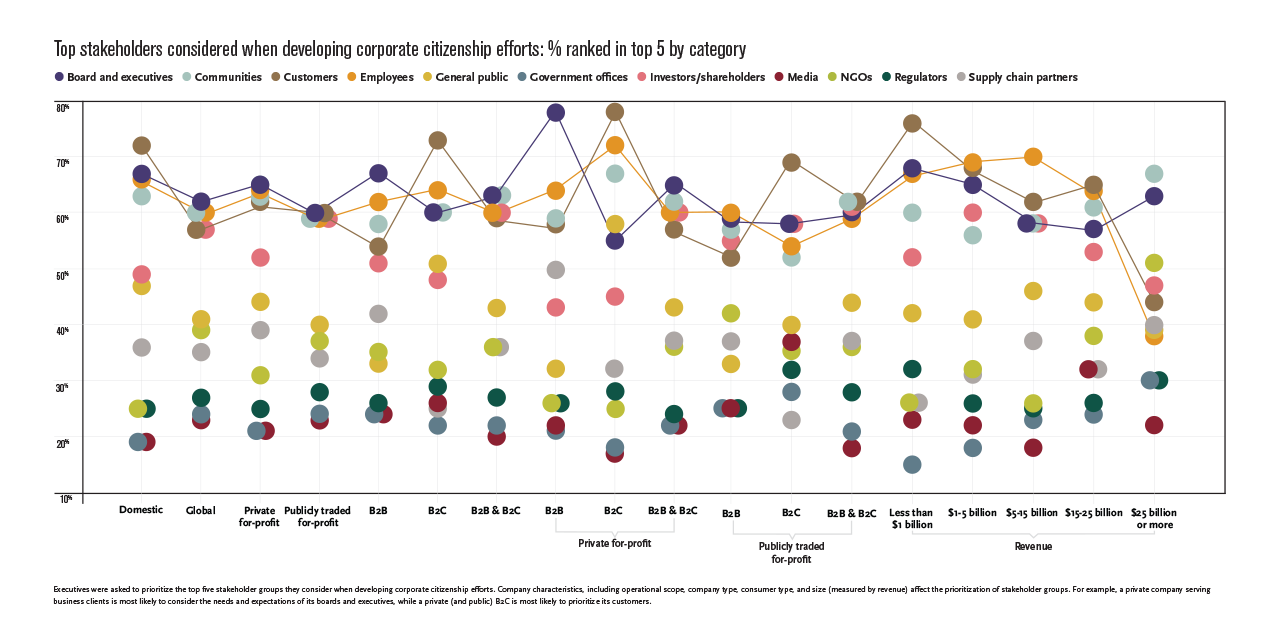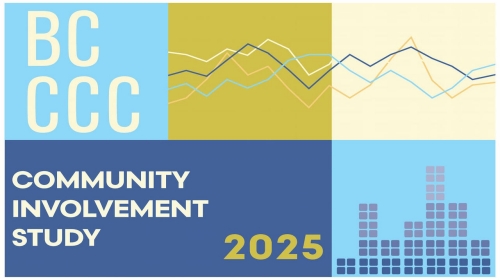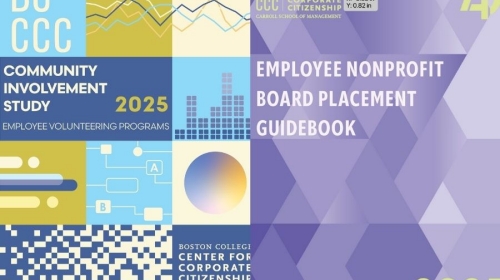WEBINAR: This webinar explores how to measure and communicate your organization's social impact with proven frameworks and strategies that matter to stakeholders.
The Corporation Redefined
We can add last week’s statement from Business Roundtable (BRT) to the growing list of signs that business is prioritizing increasingly a broader array of stakeholders. Comprised of the chief executives of nearly 200 of America’s most prominent companies, the BRT released a letter urging other companies to consider factors including the environment and workers’ wellbeing alongside their pursuit of profits. Read the letter and see the signatories, an impressive list which features 53 of our member companies.
Who said that middle school math is useless? Remember PEMDAS? Parentheses, Exponents, Multiplication, Division, Addition, Subtraction… The order of operations must be observed to return the correct value. The order in which the BRT lists the stakeholders to be considered is not an accident (customers, employees, suppliers, communities, finally…shareholders). The equation might look something like this:
((Customers X employees)suppliers/ communities) + investors = value
We’ve come to put shareholders first, but this was not always so. For much of the 20thcentury the “managerial” approach to business was accepted broadly. This approach positions executives (and boards) as stewards of great institutions (companies) that serve multiple needs and stakeholders in society. The purpose of companies was defined broadly—they provide jobs for a participatory economy, distribute risk, create stability in communities, support retirement, etc. This approach allows for an inclusive and therefore more stable economy. Well compensated employees, after all, become customers in the economy. As billionaire investor and activist Nick Hanauer has pointed out, “How many pairs of pants can a billionaire like me actually buy?...only a thriving middle class can support a great national economy.” The managerial approach has been argued by legal scholars (most notably Stout and Greenfield), investors, and economists (most recently Piketty) as a more sustainable approach for business.
Prioritizing customers and employees is common sense. After all, we have no business if we don’t have customers. More engaged employees will provide better service to the company and the customer. There is a proven empirical connection between this practice and increased business value; in fact, research suggests that investing in both leads to increased firm value, as investors often consider both company and employee retention in their analyses.[1]
The list of commitments and duties to employees represents an important shift. Personally, I would love to see this intensify the conversation about living wages—a commitment that many companies are making because they realize it not only differentiates them in the competition for talent, but also helps to ensure a more robust economy. For example, companies including Target, Aetna, and Bank of America have announced plans to raise their minimum wages to $15 and $20, respectively, ahead of any legal mandate for an increase.
The conversation about refocusing corporate purpose and engagement in social and policy issues reflects a shifting norm in the C-suite. In the forthcoming State of Corporate Citizenship report, a majority of executive respondents reported that their corporate leaders have taken stands on social issues, including gun control, immigration, or minimum wage. A whopping 88 percent believe that corporate leaders shouldtake a stand. These public commitments include the We Are Still In agreement following the U.S. withdrawal from the Paris Accord; to CEOs from major companies such as State Street and PSEG taking public stands on long-term value creation; to a brief from more than 200 companies urging the U.S. Supreme Court to rule in favor of LGBT workers.
The commitment to consider our operating context more broadly will serve companies in the long term, as we apply systems thinking (and PEMDAS) to consider all of thestakeholders the BRT credo commits to. Here is the list:
- “Delivering value to our customers. We will further the tradition of American companies leading the way in meeting or exceeding customer expectations.”
- “Investing in our employees. This starts with compensating them fairly and providing important benefits. It also includes supporting them through training and education that help develop new skills for a rapidly changing world. We foster diversity and inclusion, dignity and respect.”
- “Dealing fairly and ethically with our suppliers. We are dedicated to serving as good partners to the other companies, large and small, that help us meet our missions.”
- “Supporting the communities in which we work. We respect the people in our communities and protect the environment by embracing sustainable practices across our businesses.”
- “Generating long-term value for shareholders, who provide the capital that allows companies to invest, grow and innovate. We are committed to transparency and effective engagement with shareholders.”
What changes will a shift to slowing down to consider all stakeholders bring? It may bring slower growth, but more sustainable and stable long-term value. The members of the BRT seem to believe that it will.

As evidenced by the findings above from the forthcoming State of Corporate Citizenship, customers, employees, and communities are prioritized by executives—with the majority across all demographic breakdowns ranking all three groups among their top tier. The BRT may be ambitious in their elevation of supply chain partners, which according to our sample were prioritized by, at most, half of B2B private for-profit companies.
Use this chart to benchmark how other companies like yours are prioritizing stakeholders.
Conduct a materiality assessment—informed by the needs and expectations of those stakeholders—to create a corporate citizenship strategy that focuses on the issues that your company can most effectively address with its core competencies and resources. This is at the heart of assessing the materiality—the quality of being relevant or significant—of the issues in which we invest.
Since the BRT released their statement, some commentators have asked whether these chief executives will follow through on their commitments. However, many companies already are taking the lead on applying solutions to address social and environmental challenges, stepping in and making change where governments have stalled. State Street and PSEG have already followed up their words with demonstrated action on board gender diversity and climate change, respectively—and there are more examples, which we are covering here in the Corporate Citizenship Perspectives blog. Overall, the BRT’s comments have renewed my optimism and reinforced my confidence in the important work of corporate citizenship to build better business and a better world.
[1]Groening, C., Mittal, V., Zhang, Y.A. (2016). Cross-validation of customer and employee signals and firm valuation. Journal of Marketing Research, 53, 61-76.
Related Content
RESEARCH BRIEF - Researchers investigated how ESG activities help or hurt financial performance, using nine years of data from over 1,200 global companies.
RESEARCH BRIEF - Researchers analyzed 4 US energy exchange-traded funds (ETFs) over 15 years, including 2 dirty energy funds tracking fossil fuel companies and 2 clean energy funds tracking renewable energy companies.
RESEARCH BRIEF - Researchers conducted a survey, which measured perceptions of CSR and ethical leadership within the manufacturing and service industries.
WEBINAR: This webinar explores how corporate giving will be reshaped by the One Big Beautiful Bill. Hear directly from corporate citizenship leaders as they share innovative, real-world strategies that deliver impact for communities and results for business.
This study explores shifting trends in employee volunteering, corporate giving, and other means of corporate community involvement.
This guidebook offers insights on placing employees in nonprofit board service roles.
This study explores shifting trends in employee volunteering, corporate giving, and other means of corporate community involvement.








